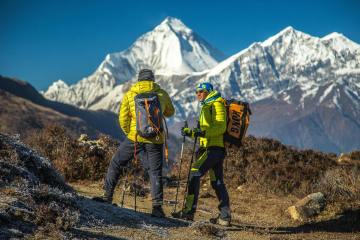Among the icy trails of Mount Everest lies one of the mountain’s most haunting legends — Green Boots. The name was given to the preserved body of a climber resting in a small limestone alcove on the north ridge, about 27,890 feet (8,500 meters) above sea level. His bright green Koflach boots became an unmistakable sight for nearly every climber ascending from the Tibetan side.
Believed to be Tsewang Paljor, an Indian mountaineer who perished during the 1996 Everest disaster, Green Boots became both a symbol of human determination and a chilling reminder of Everest’s deadly reality.
Who Was Green Boots?
The Likely Identity – Tsewang Paljor
Paljor was part of a three-man Indian expedition attempting to summit Everest on May 10–11, 1996 — the same period as one of the mountain’s worst tragedies. While his identity has never been officially confirmed, the distinctive green boots match those worn by Paljor, making him the most probable candidate.
An Alternate Possibility – Dorje Morup
Some accounts suggest that Dorje Morup, another member of the same expedition, might have been the climber in the alcove. Both men vanished during the storm, and given the extreme conditions, definitive identification remains impossible.
Why Was Green Boots Left on Everest?
Preservation in the Death Zone
The area above 26,000 feet, known as the “Death Zone”, is so hostile that oxygen levels are too low for human survival. The freezing temperatures and dry air naturally preserve bodies for decades. With over 200 climbers’ remains still on Everest, retrieval missions are often too dangerous and expensive to attempt.
A Grim Landmark
For years, Green Boots became a macabre waypoint for climbers following the northeast ridge route from Tibet — a silent testament to the risks of high-altitude climbing.
The Removal of Green Boots (2014)
In 2014, reports surfaced that Chinese climbers had quietly removed Green Boots from his resting place. While never publicly confirmed, several reasons were suggested:
- Respect for the deceased: Offering dignity through relocation.
- Reducing emotional impact: Sparing climbers from a distressing sight.
- Improving route safety: His body was near a narrow passage, posing potential hazards.
The current location of Green Boots’ remains remains unknown.
Mount Everest Death Toll: Sobering Fact
- Estimated deaths (as of 2024): 310–330 climbers
- Bodies remaining on the mountain: Over 200
- Primary cause of death: Exposure, exhaustion, and altitude-related illness — mostly within the Death Zone
Each statistic represents not just numbers but stories of human courage and sacrifice.
Green Boots: Symbol of Everest’s Price
For decades, Green Boots became more than a frozen figure — he became a symbol of Everest’s high cost. His presence sparked ethical debates among mountaineers and the public alike:
- Should fallen climbers be left where they rest?
- Is it respectful to use bodies as route markers?
- How far should recovery efforts go in such perilous conditions?
These questions continue to define the morality of modern mountaineering.
Further Reading
If you’d like to dive deeper into the events surrounding Green Boots and the 1996 Everest tragedy, explore:
- “The Climb” by Anatoli Boukreev – A gripping first-hand account.
- “Left for Dead” by Beck Weathers – A survivor’s perspective from the same expedition.
- BBC, National Geographic, and The New York Times archives – For credible, historical insights.
Final Thoughts
The story of Green Boots of Mount Everest reminds us that nature demands respect. Whether he was Tsewang Paljor or Dorje Morup, his legacy endures as a sobering symbol of ambition, courage, and the fine line between human will and nature’s power.
“Above the clouds, every step tells a story — and some stories never return.”
Discover more from Nepal Travel Vibes
Subscribe to get the latest posts sent to your email.



